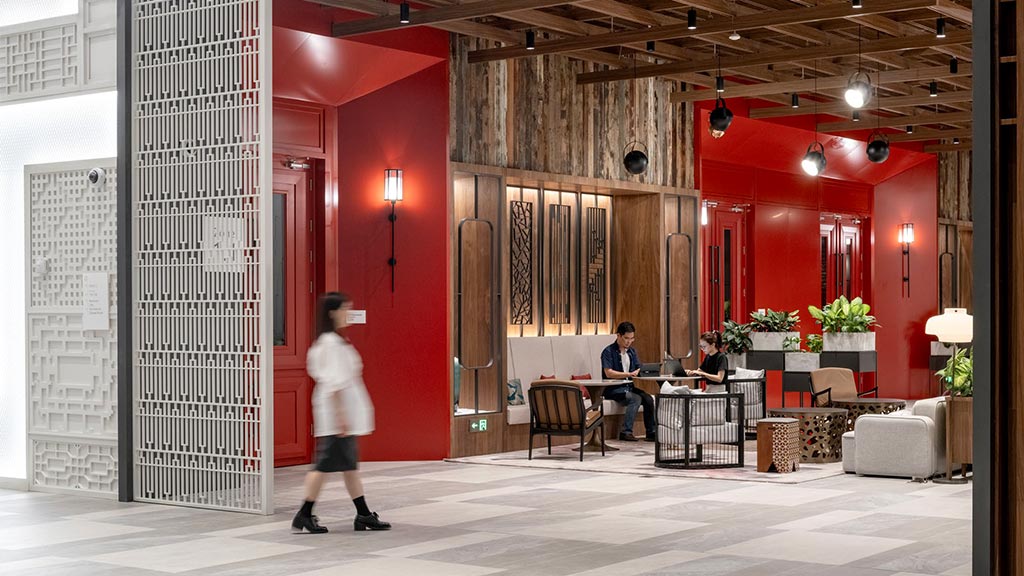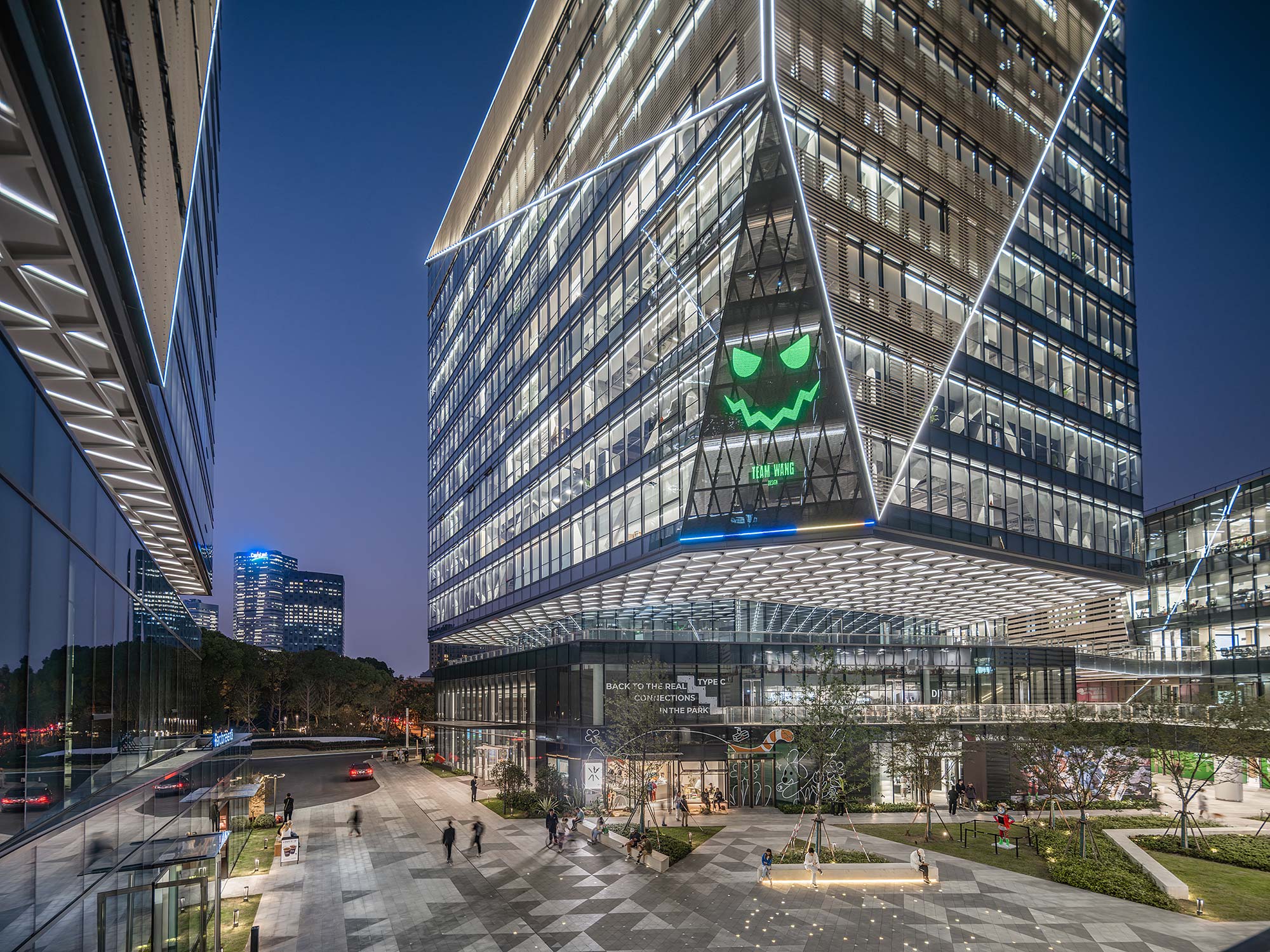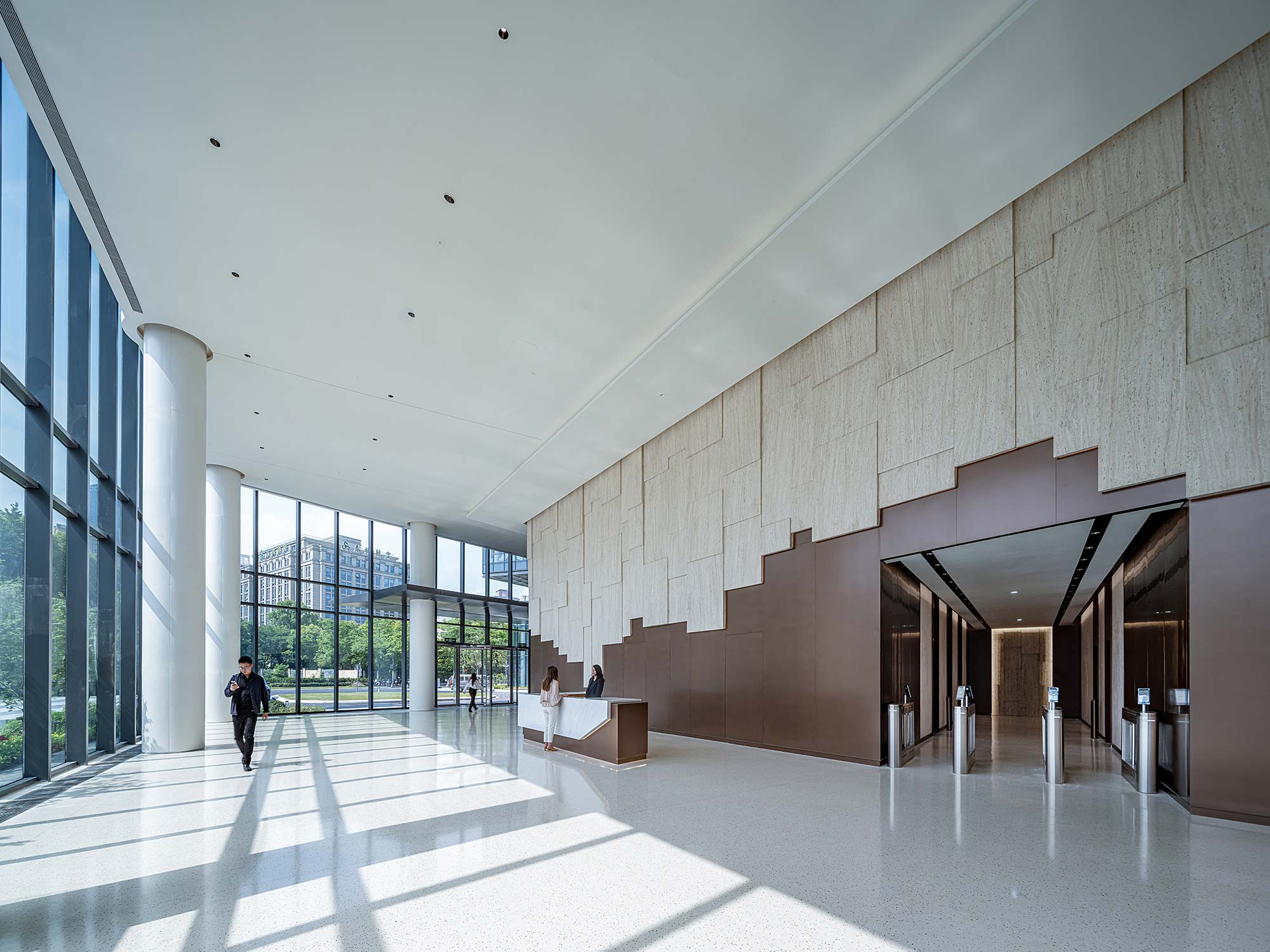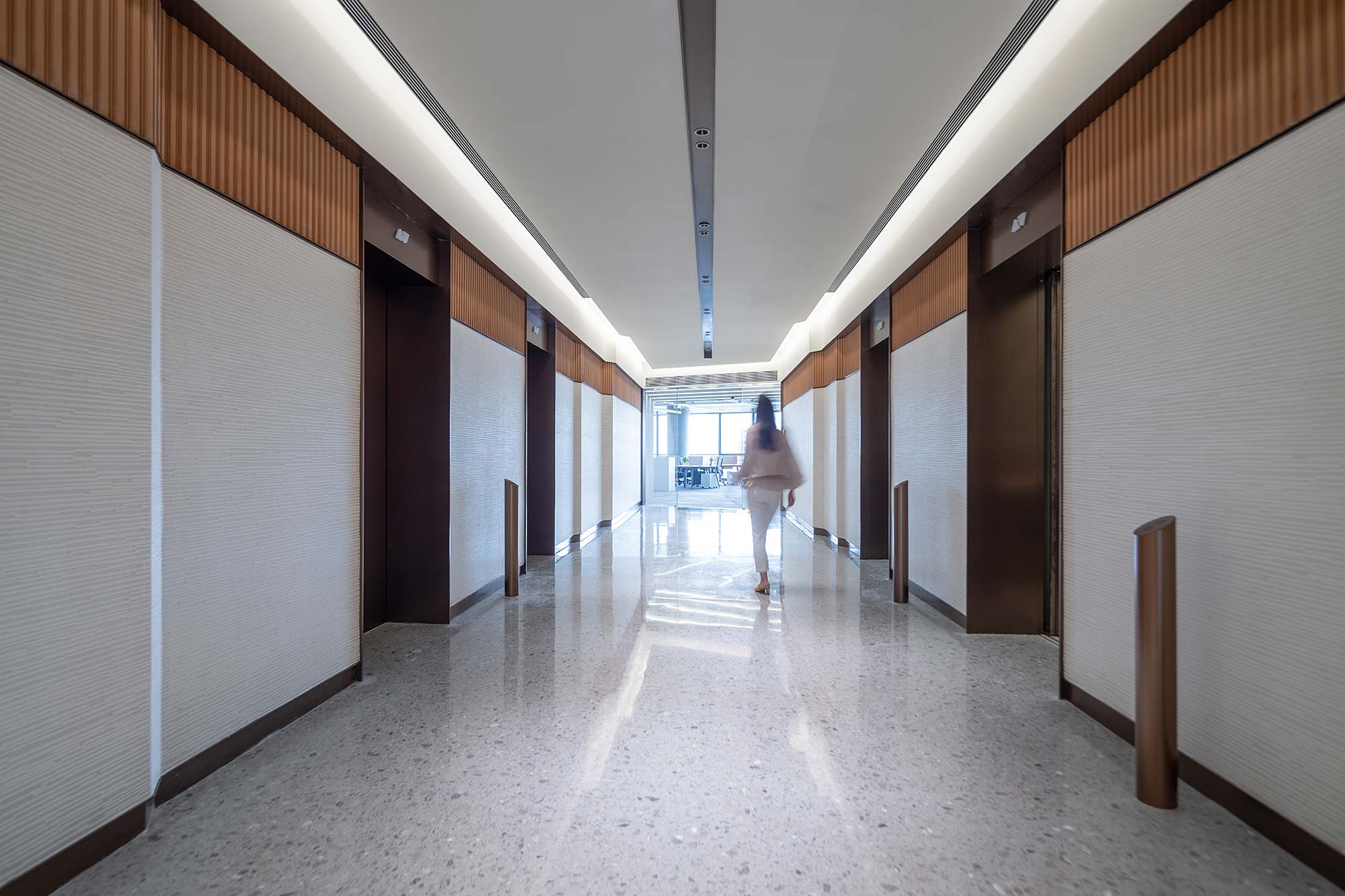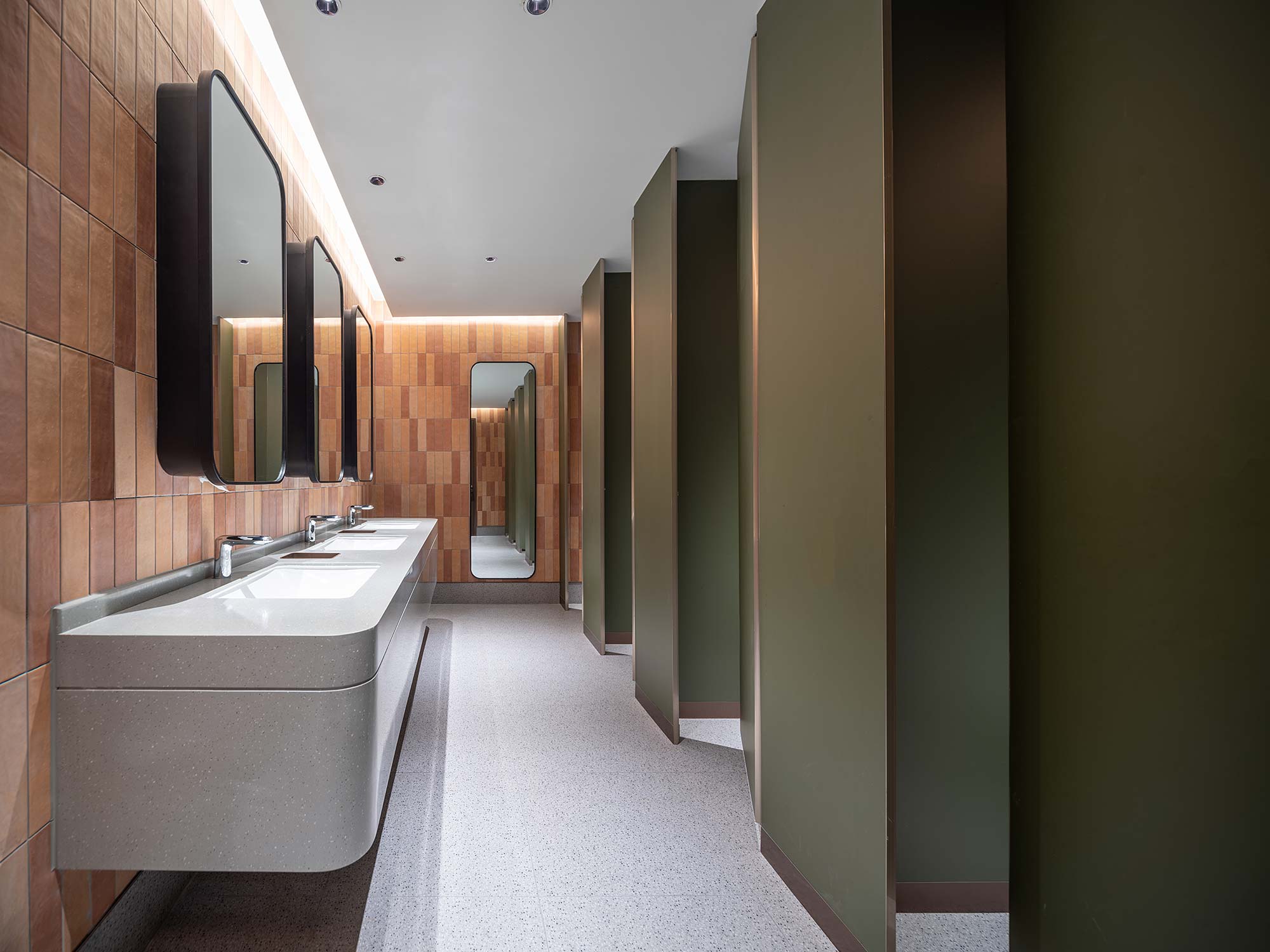- 110,000-Square-Meter Mixed-Use Development
- 51,300 Square Meters of Office Space
- 43,000 Square Meters of Green Space
- 6,000 Square Meters of Cultural and Art Spaces
- 8,000 Square Meters of Sunken Plaza
- 100% Leased Office and Retail Spaces
- Green Building Label 3 Star
- LEED Gold
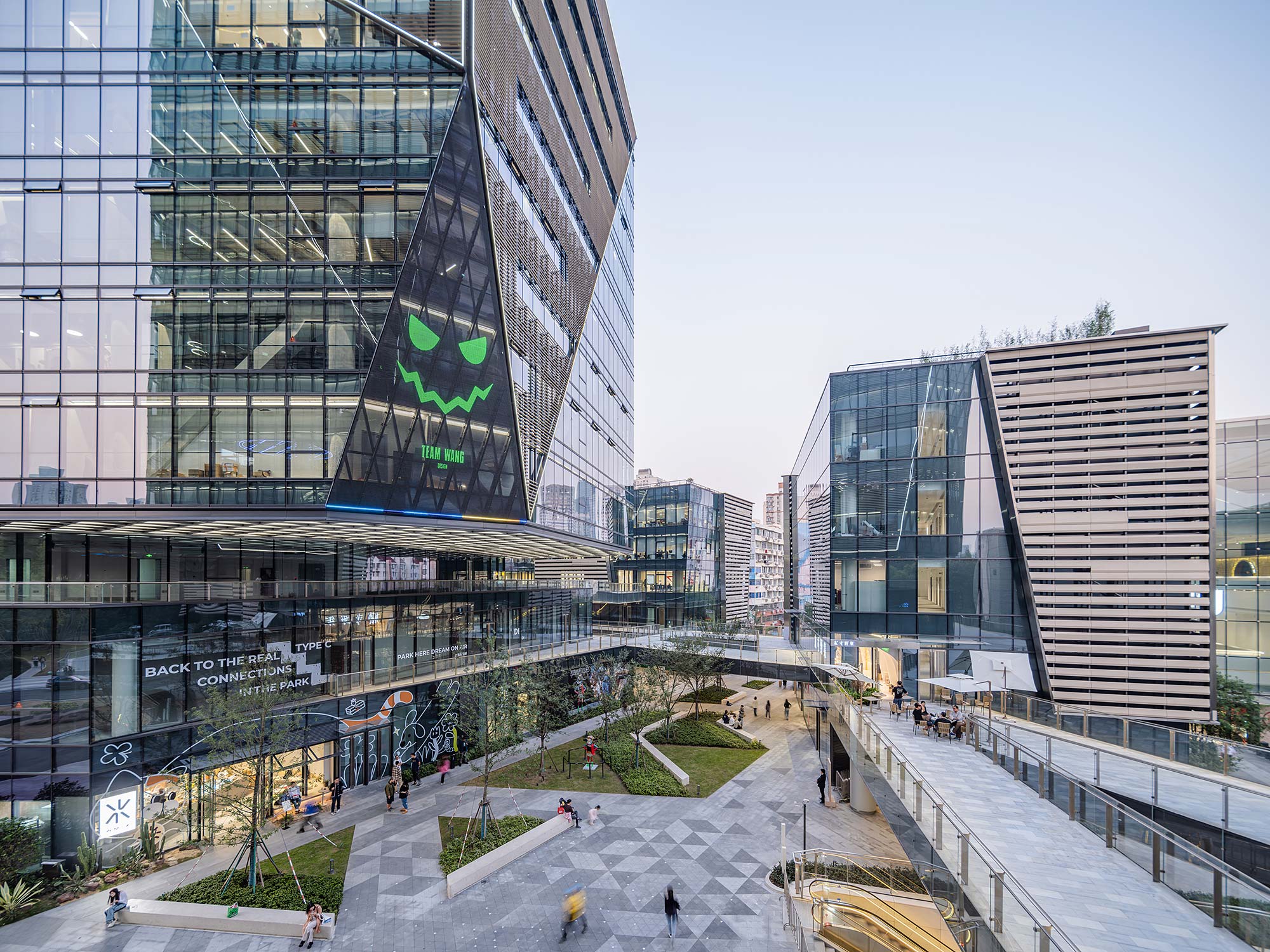
As more people continue to move to major Chinese cities like Shanghai, single-use districts have become vibrant mixed-use destinations to accommodate the population growth. By integrating commercial, cultural, entertainment, and residential spaces with public space, these cities are shaping neighborhood vibrancy. The developer for the C·PARK Haisu mixed use district wanted to create a cultural destination that would leverage the nearby Liu Haisu Art Museum and help strengthen the district’s evolving art scene.
Gensler crafted a permeable plan that prioritizes art, nature, and community. The design “lifts up” the volume of the two main buildings on the site to optimize natural light for the lower floors and create a central floating courtyard for hosting unique retail experiences. The two elevated office towers also free up the ground plane to accommodate a lineup of retail pods that enliven the streetscape. Galleries and boutique retail stores ring a central sunken plaza and attract people from around the city.
C·PARK Haisu is poised to become an urban catalyst for the up-and-coming neighborhood. A multi-level pedestrian system seamlessly connects the development with Tianshan Park, the subway, and Haisu Green Land to create an urban model that integrates public space and the arts with spaces for retail, work, and leisure. Since its opening in September 2023, C·PARK Haisu has hosted 35 fashion and lifestyle events, attracted one million visitors, and successfully converted foot traffic into consumer spending.
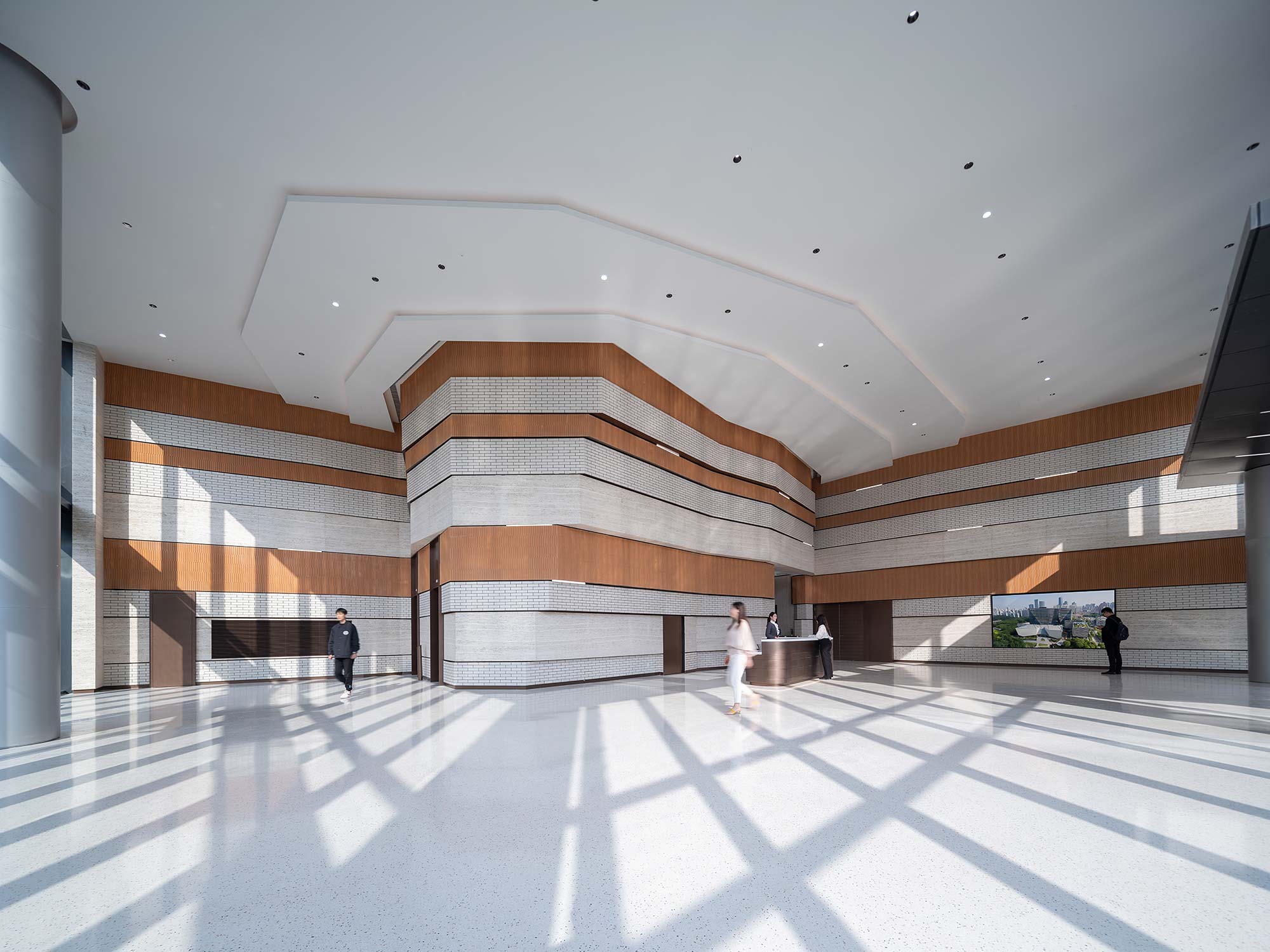

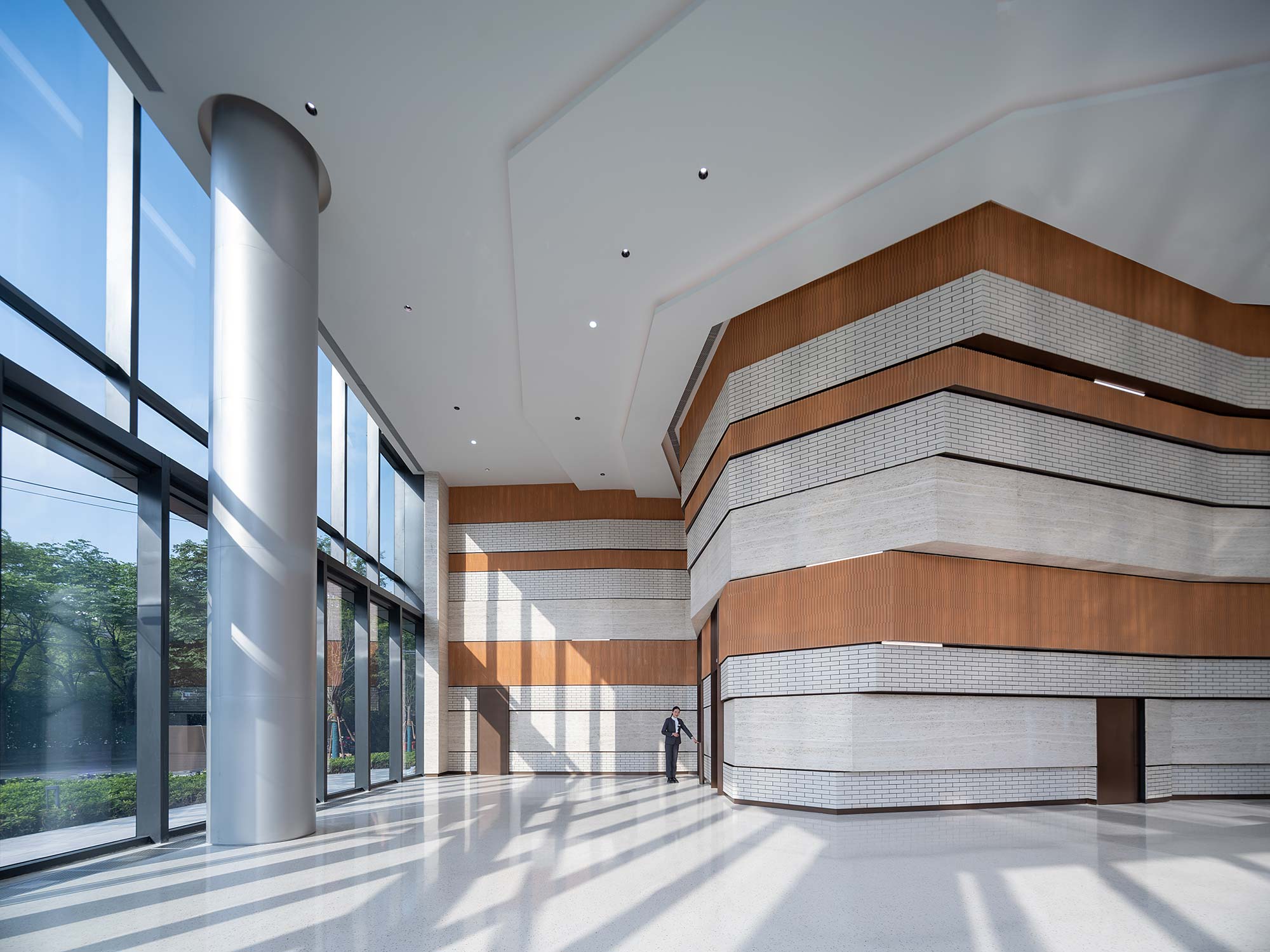
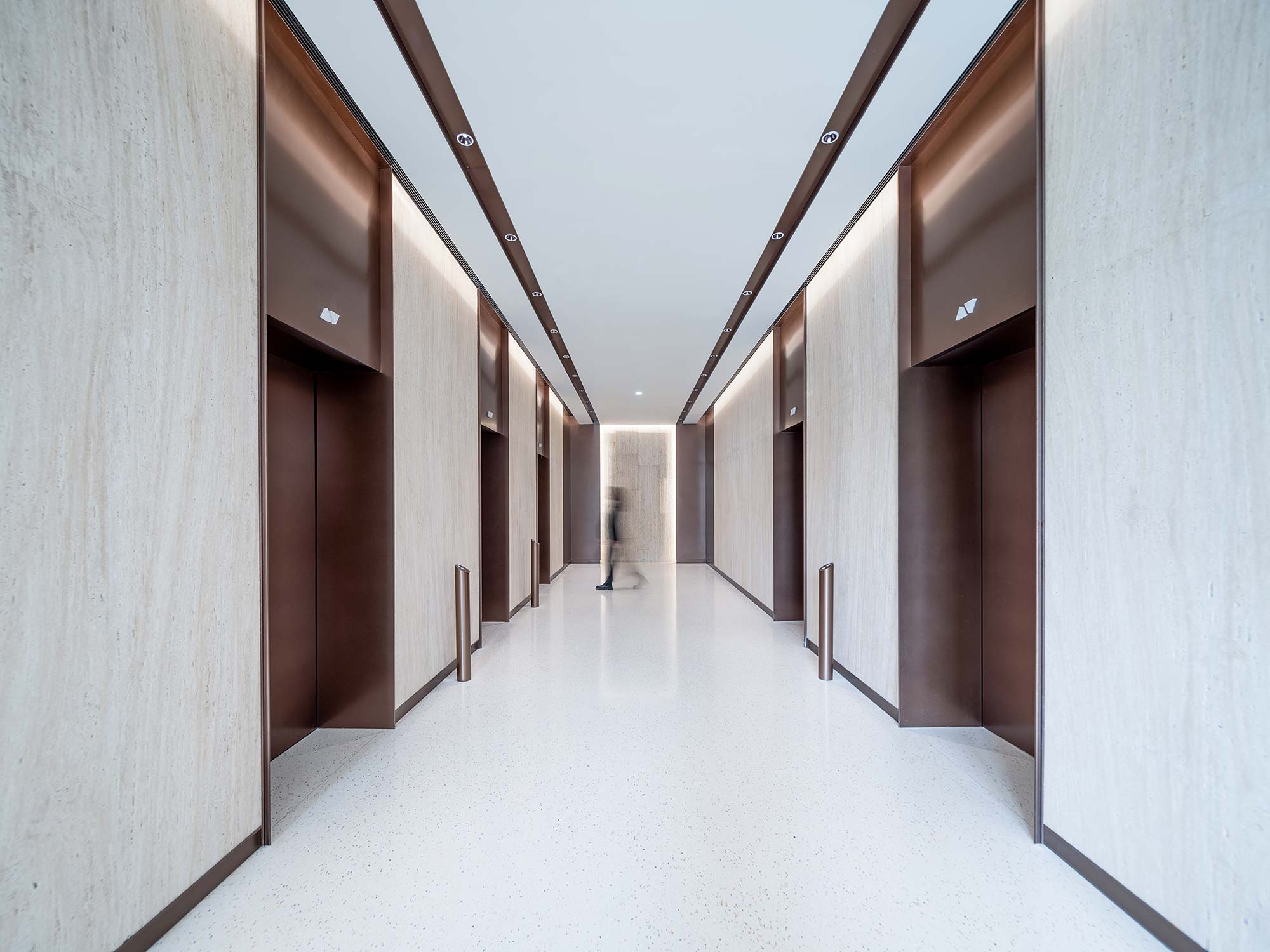

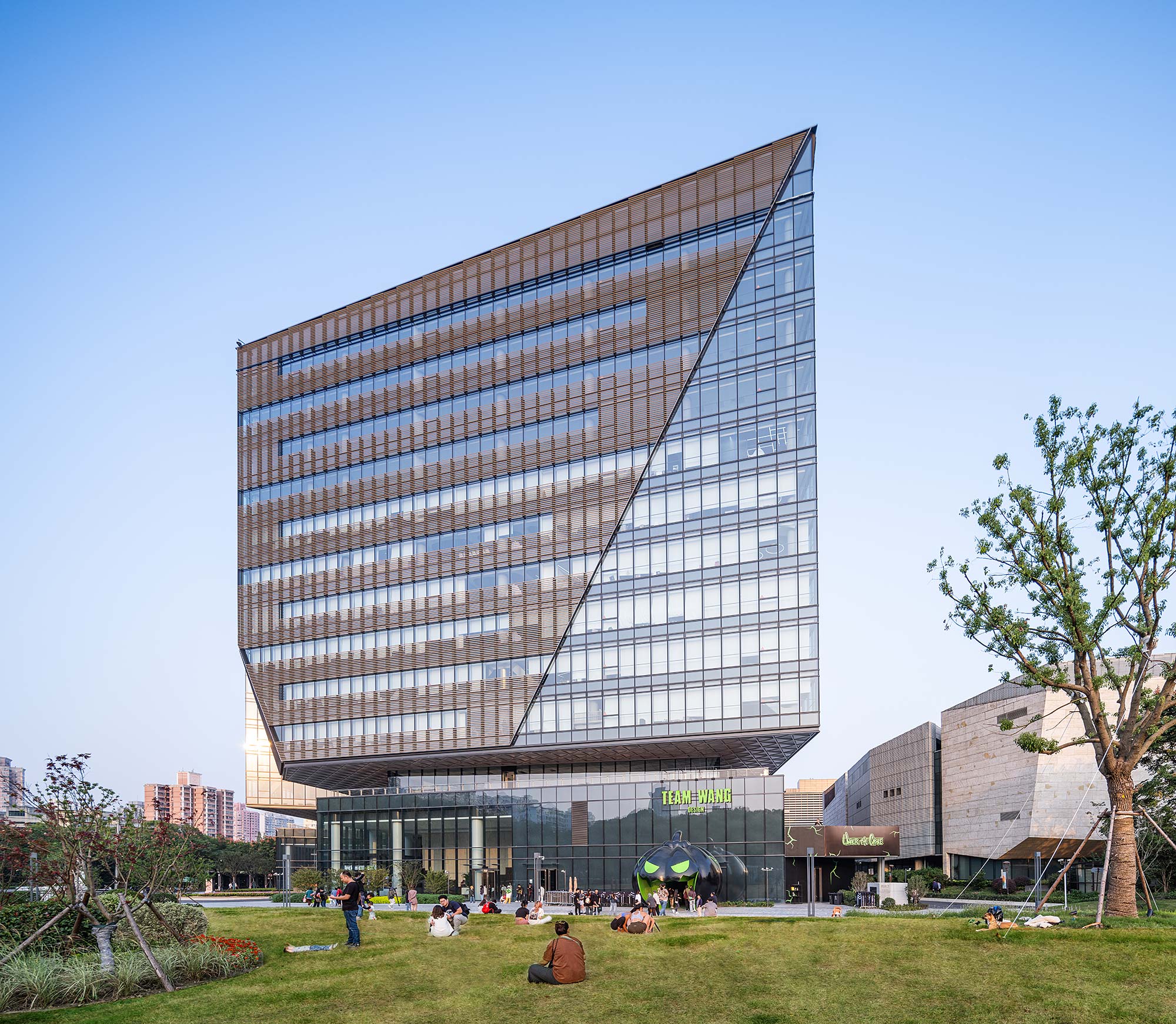

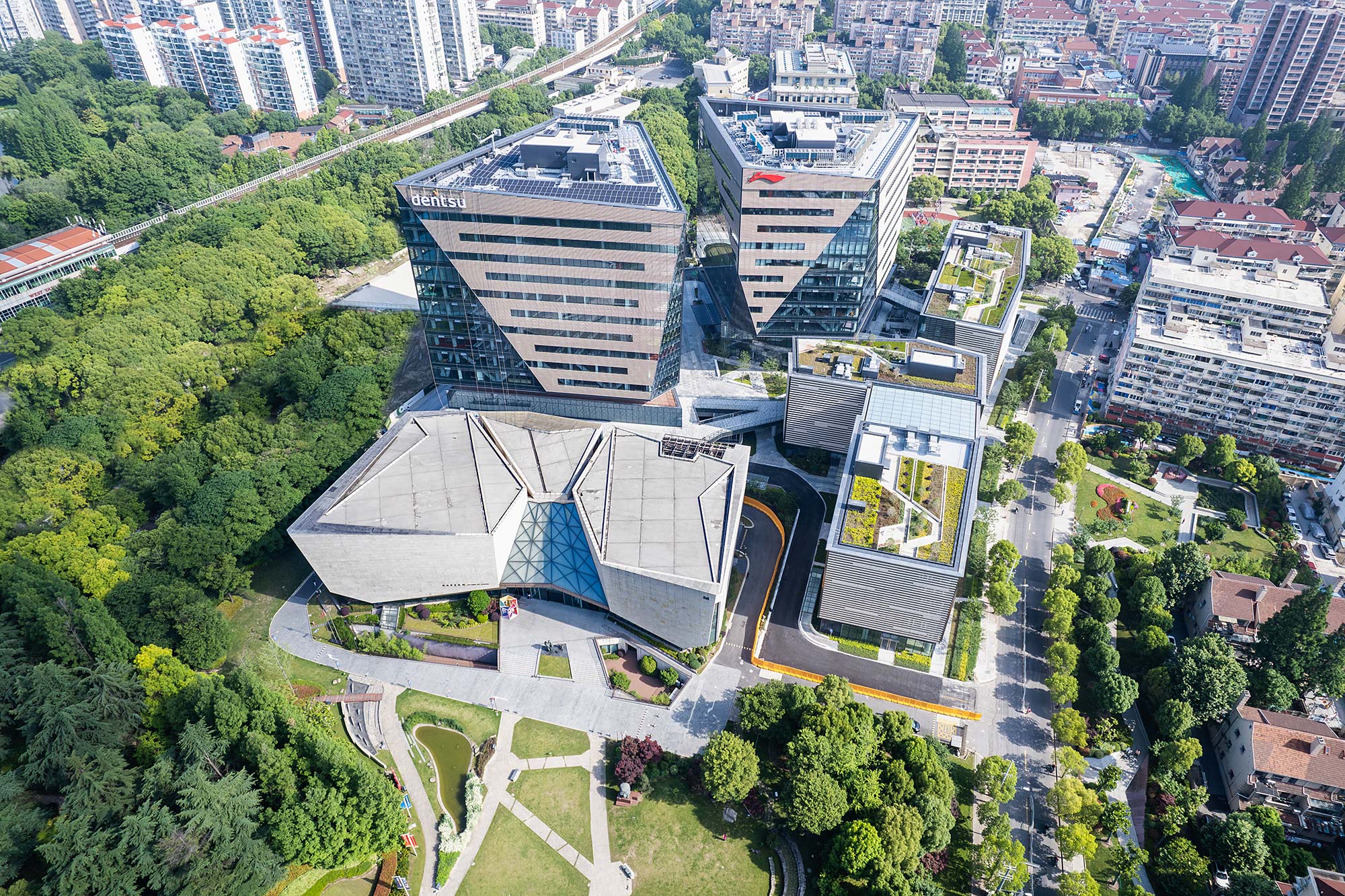
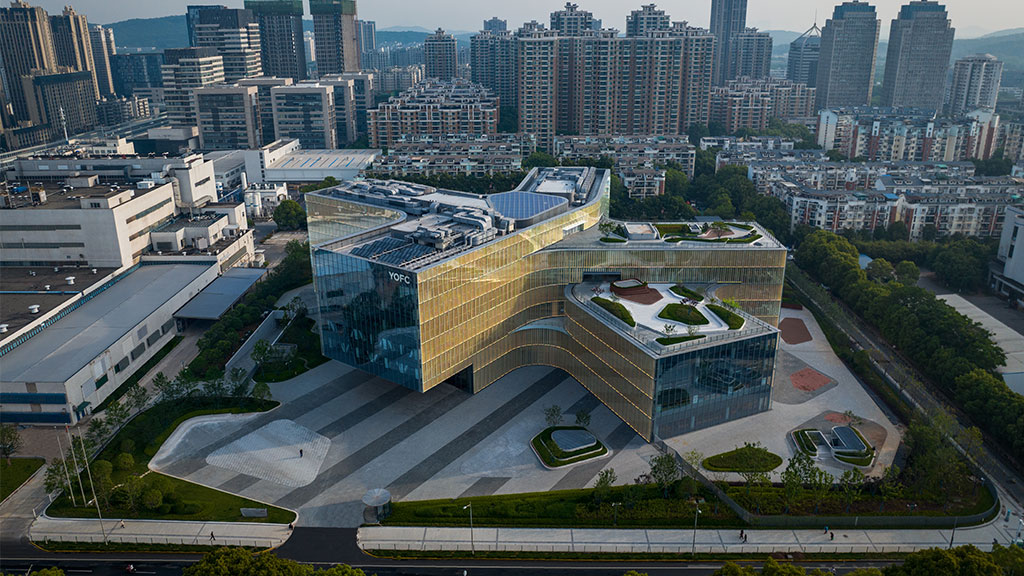
YOFC Headquarters
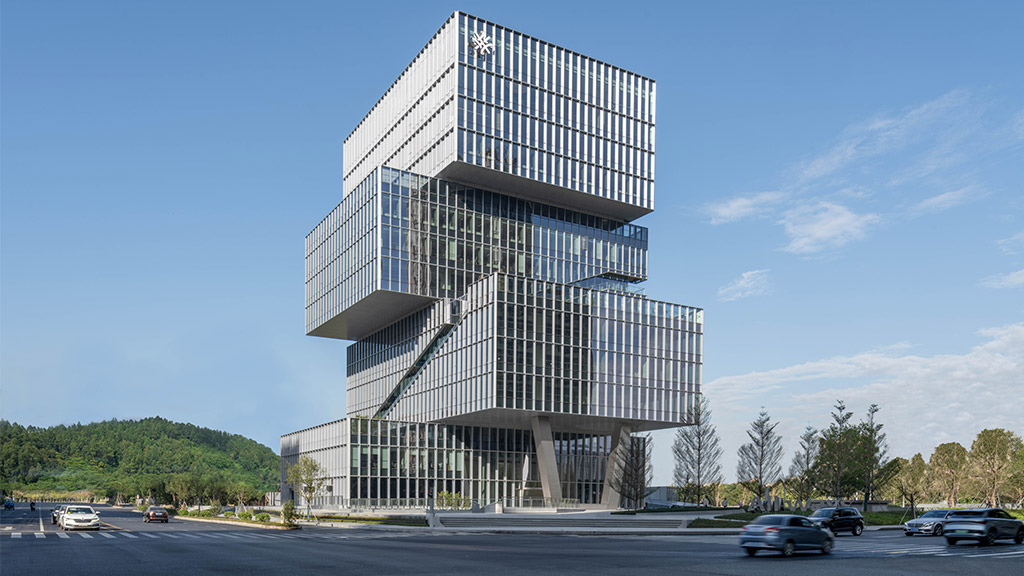
Highsun Headquarters
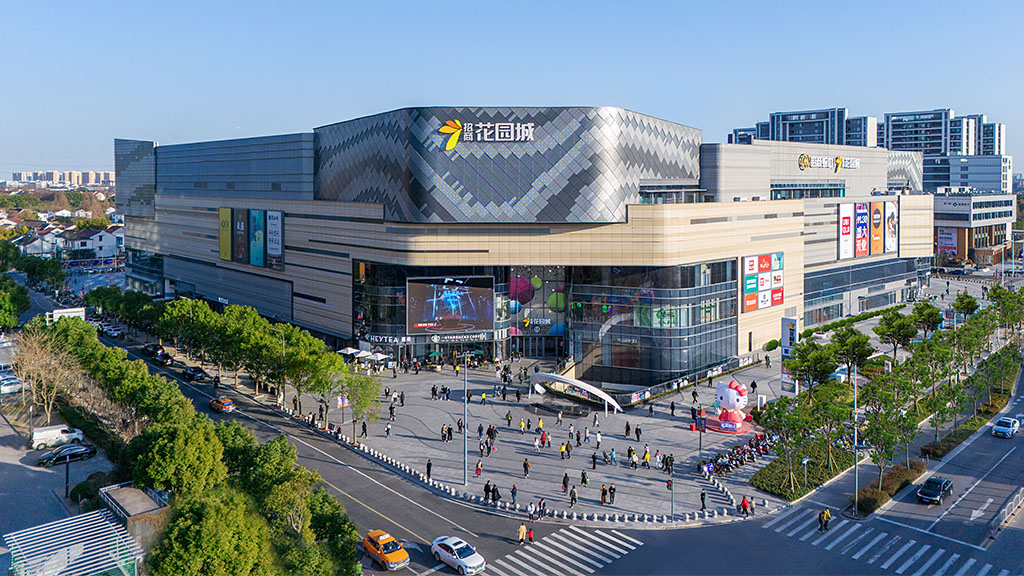
Caolu Garden City

Fifth + Broadway
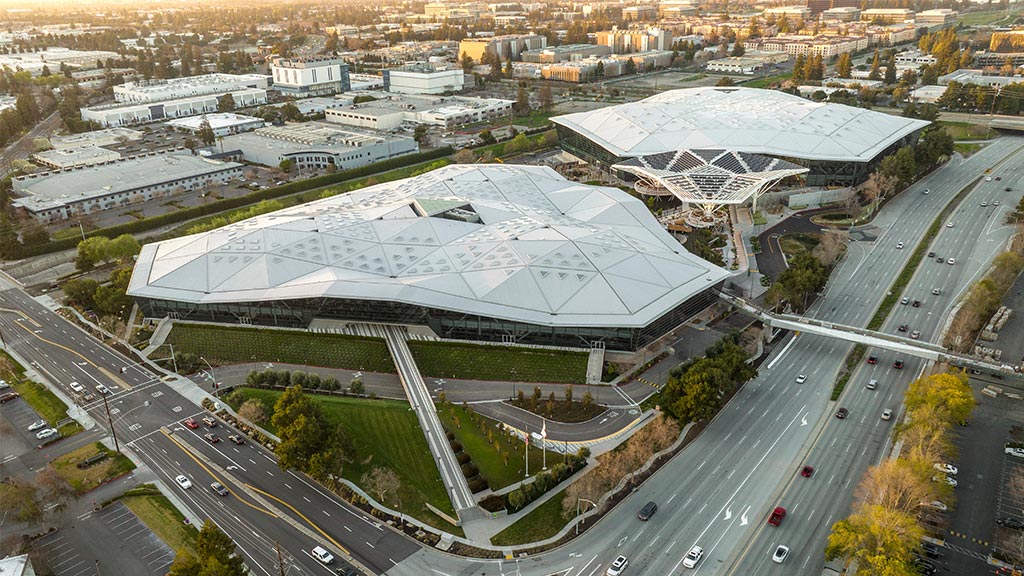
NVIDIA

Zhangjiang Twin Towers

West Edge
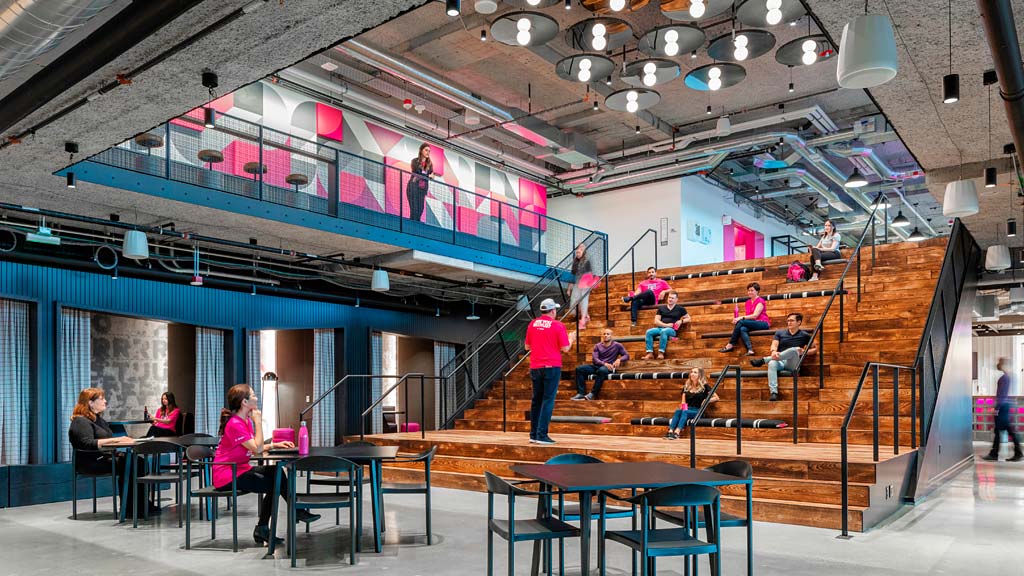
T-Mobile Headquarters Campus
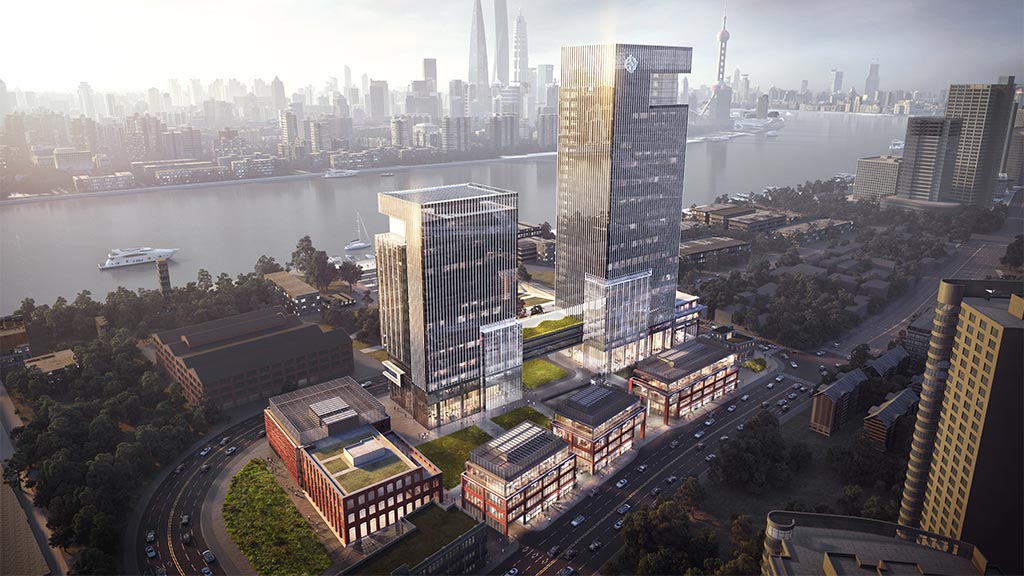
CCCC Riverside Plaza
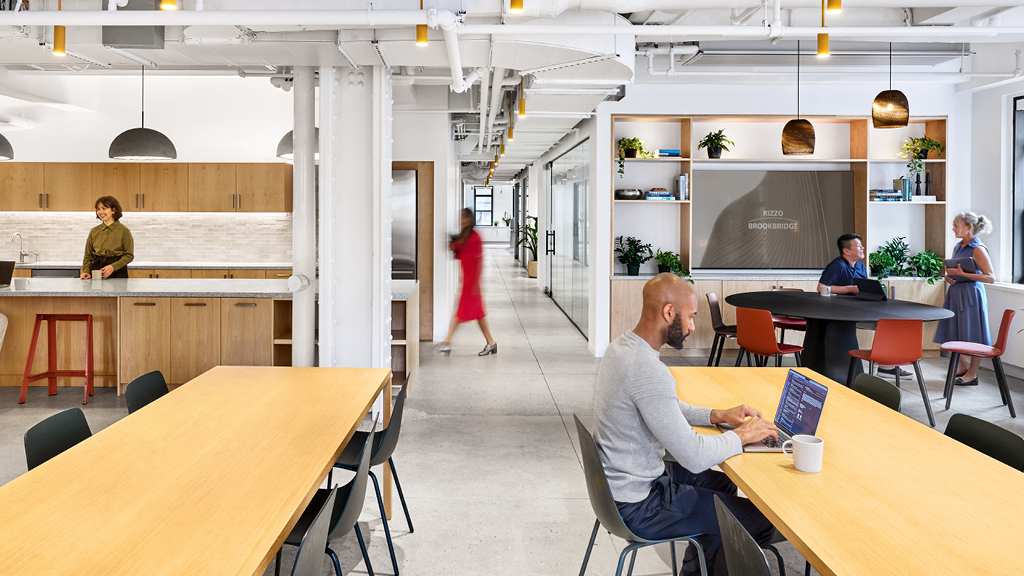
Global Workplace Survey 2025
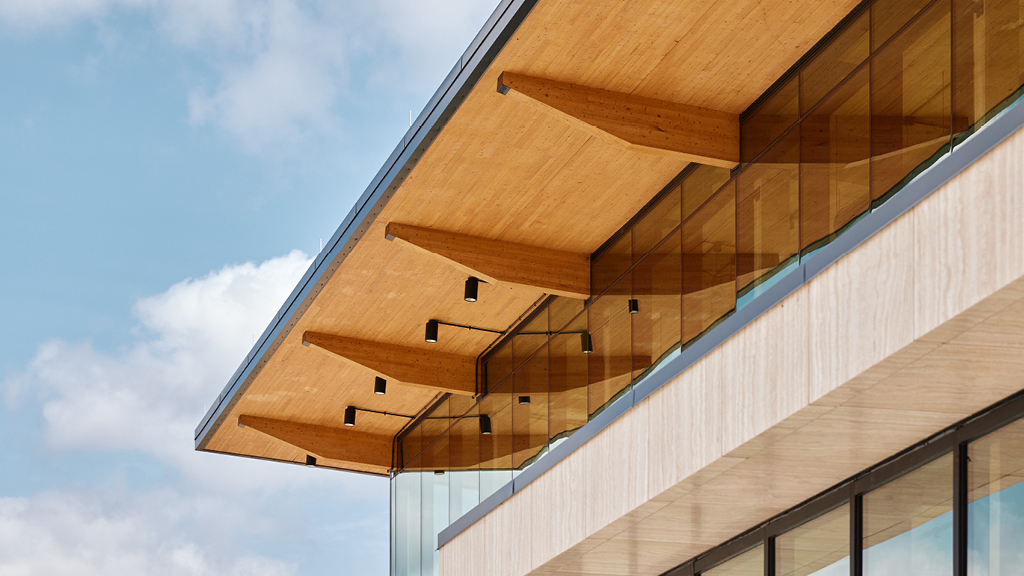
Climate Action Through Design

Trends to Watch: The Future of Cities Relies on Multiuse Districts
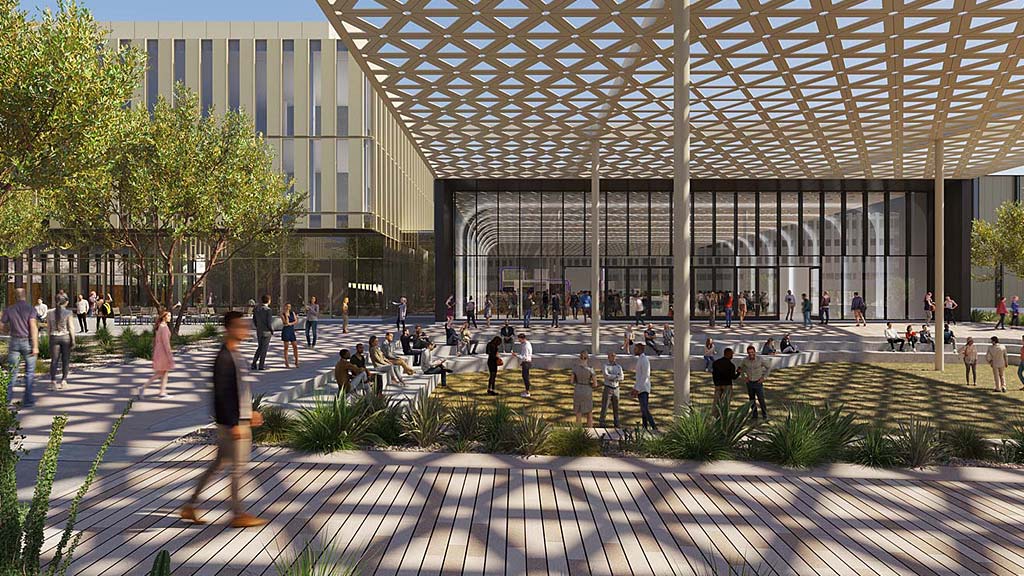
5 Trends Shaping Design in 2025
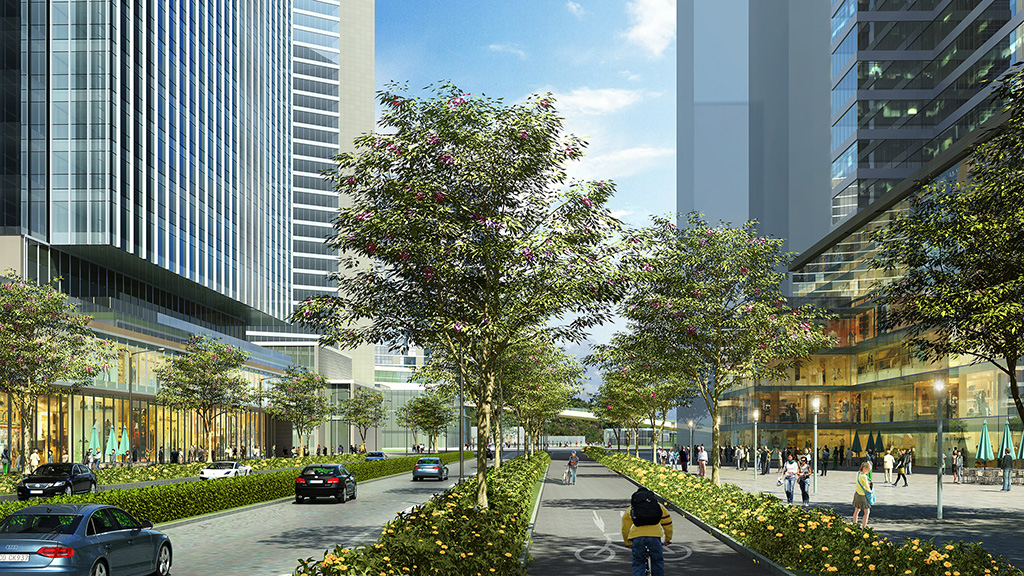
Designing Safe, Walkable Cities for Future Generations of Children
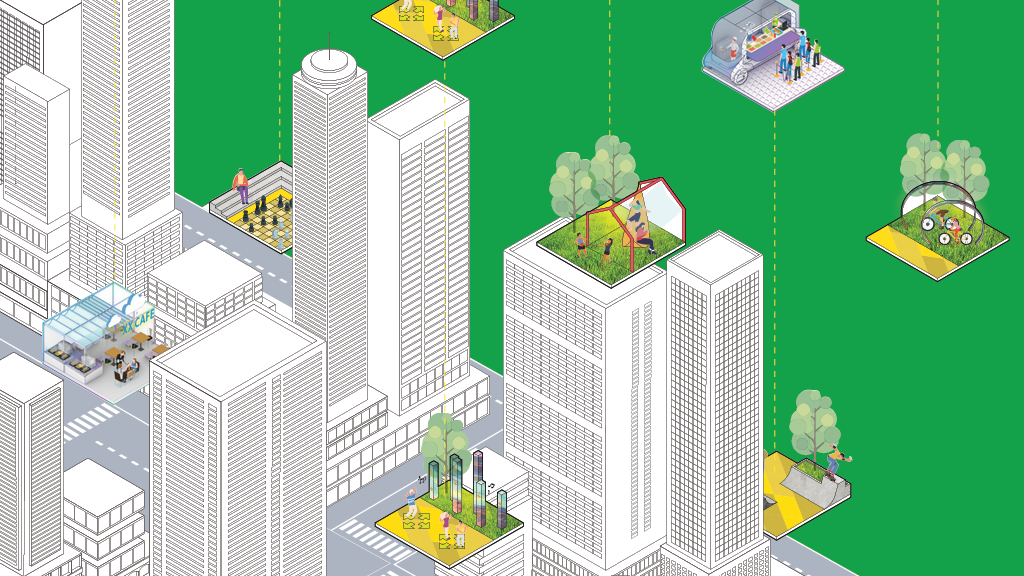
Redefining the Future of Urban Wellness in China
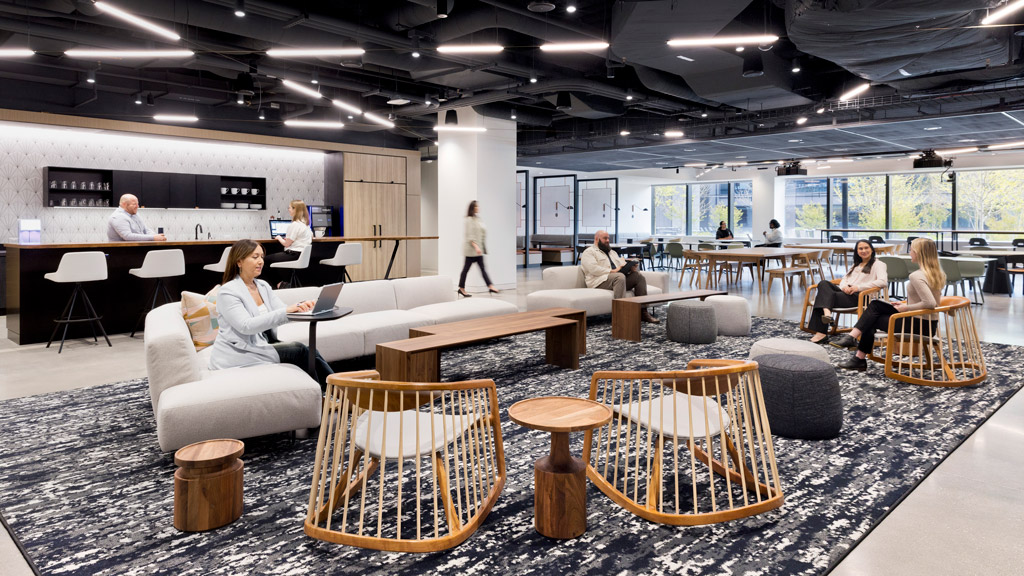
How the Future of Work Is Influencing Workplace Design
